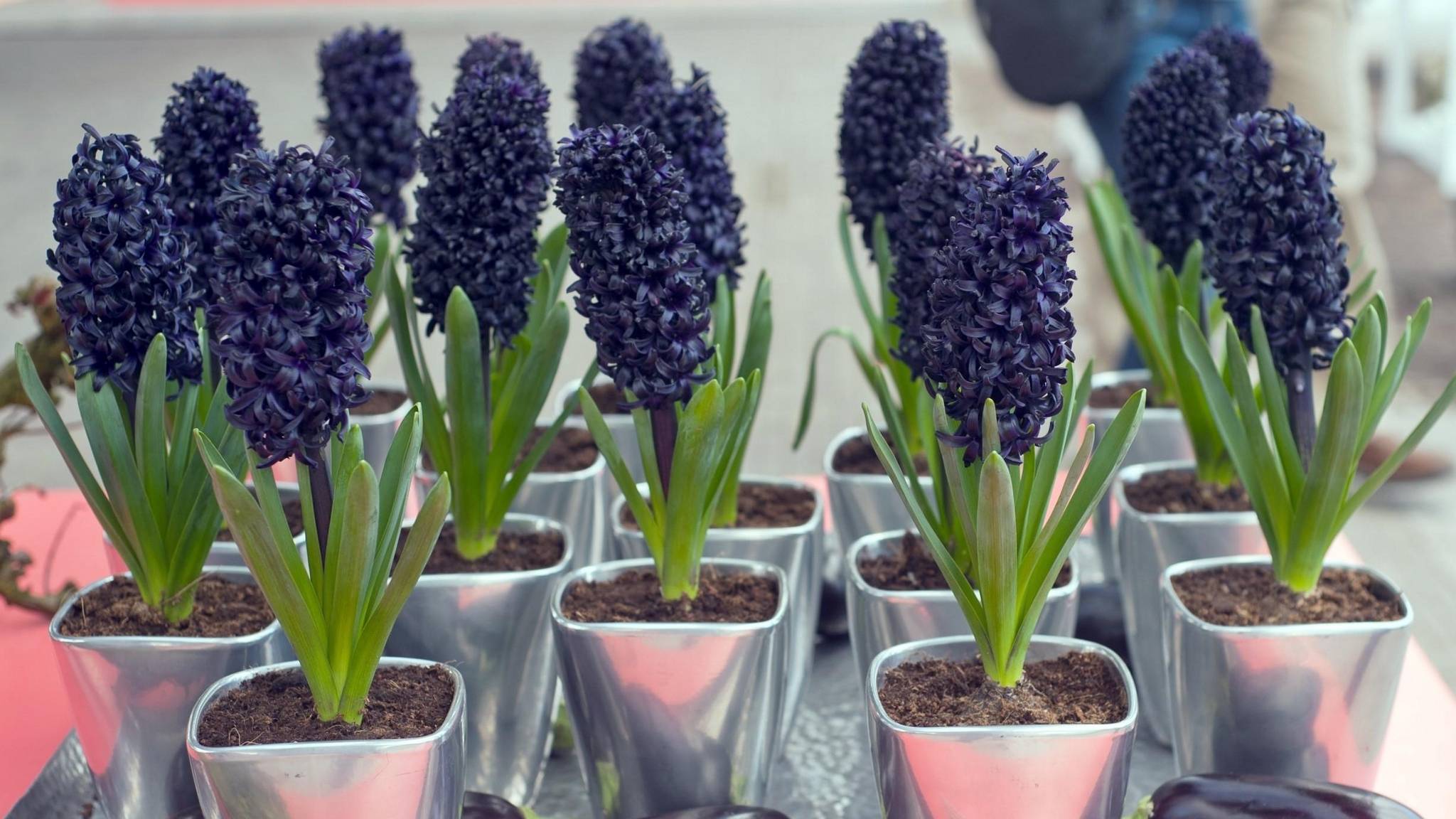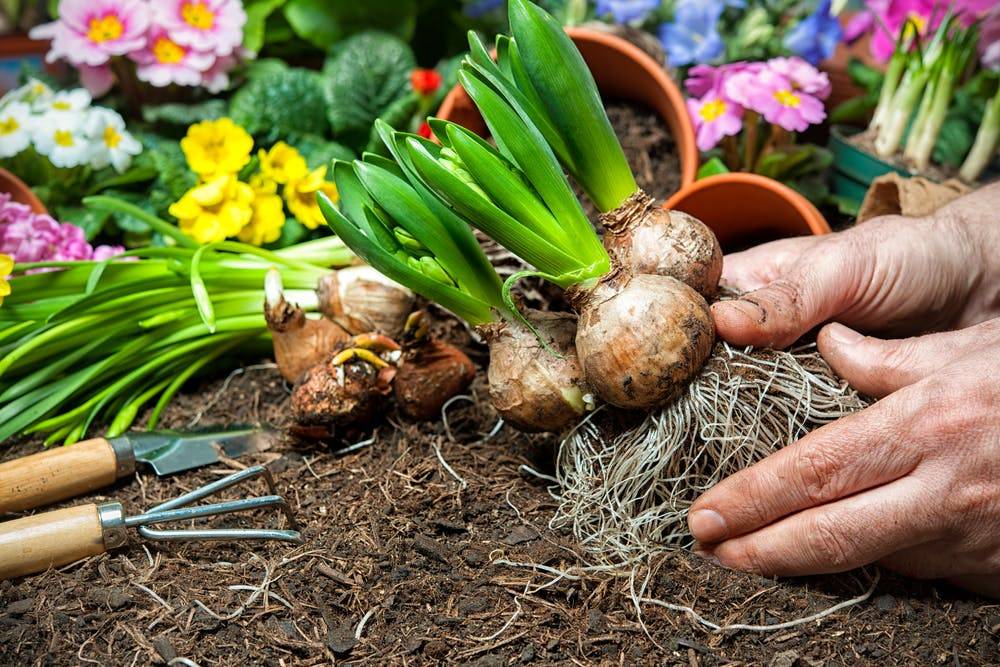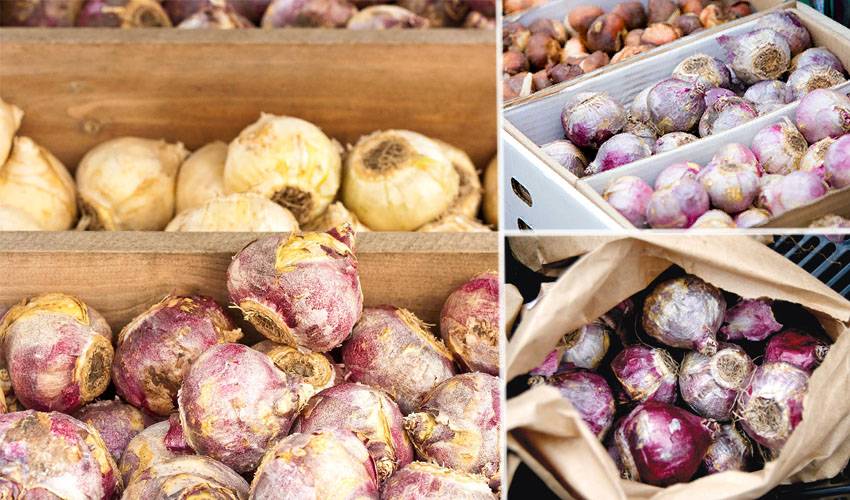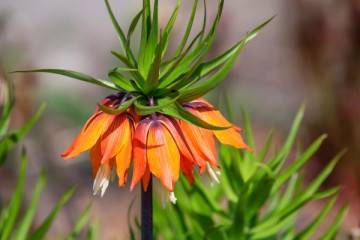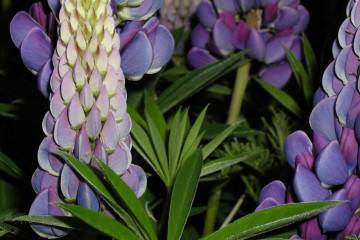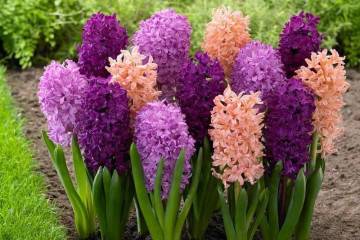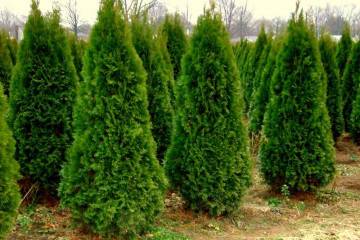When to dig up hyacinths after flowering
Content:
Hyacinth is a plant that blooms very early. Despite the fact that they grow both in the garden and at home, they are quite moody and require careful maintenance. The period after they have faded is especially important. Gardeners have a question: how to preserve the plant until next year and do you need to dig out your favorite hyacinths for the winter?
Do you need to dig up hyacinths annually
Hyacinths need to be dug up annually to maintain their varietal characteristics. In order for a bud to germinate in a tuber, the tuber necessary for flowering in spring must be stored under favorable conditions at a temperature of 26-30 ° C. For example, in such regions as the Moscow region, in winter such temperature in the soil does not exist.
In addition, digging up flowers each year reveals damaged bulbs that can prevent healthy plants from growing. They need to be removed from the growing area.
It also avoids a number of consequences:
- planting material degenerates and blooms worse;
- problems with reproduction appear;
- high probability of contracting the disease.
When to dig up hyacinths
How to determine the best time to dig up flowers? The answer to this question is determined based on the type of plant.
Florists dig up hyacinths in the summer from late June to mid-July so that they can be planted in the soil again in the fall. If we are talking about rare varieties of flowers, it is recommended to dig them up in the fall to avoid possible freezing.
The question of when it is better to dig out hyacinths after their flowering is decided individually for each type and purpose. But there are a few things to keep in mind. After the plant has bloomed, the bulb needs time to recover - 2 months. During this period, the hyacinth needs to be properly cared for. Immediately after the flowers wither, the peduncle is cut off with a knife or scissors (carefully so as not to damage the leaves). Watering is reduced, but not completely stopped. At this time, it is recommended to feed hyacinth with superphosphate and potassium sulfate. Nitrogen fertilizing is not applied.
The moment the flowers can be dug up, the leaves of the plant turn yellow and die off. The longer the hyacinth after flowering retains the green color of the leaves, the more nutrients it will absorb during this time.
For almost all bulbs, the digging period can be roughly the same. For amateur gardeners, the time when to dig up bulbs, such as tulips and hyacinths, can be determined based on their own convenience.
Rules for extracting bulbs from the ground
Since this type of plant is very sensitive to improper care, you need to remember the precautions when digging up:
- dry and clear weather is suitable for digging;
- absolutely all bulbs must be removed from the ground: both small and large;
- it is better to dig out with an ordinary bayonet shovel, picking up the soil from a great depth, so as not to hurt the bulbs themselves;
- if the ground around is wet and tight, then first you can remove only the dried soil and wait until the rest dries.
Processing after digging
In order for the storage period to pass safely for the bulbs, they must be properly processed after digging up:
- do not immediately separate the roots and leaves. First you need to gently shake off dry soil and leave in a dry, dark place to allow the bulbs to absorb as much nutrients as possible from the aerial part;
- after the roots and leaves have completely dried, you need to remove all excess and cleanse the remaining soil;
- the bulbs are washed with cool water;
- you need to warm them up in warm water or 20 minutes. hold maxim in the drug solution;
- at the end, put the bulbs in a dry, dark place and leave to dry for 4-5 days.
The special processing method also contributes to the accelerated reproduction of the plant:
- the bottom of the bulb is cut crosswise with a disinfected and sharp knife;
- dry the incisions.
This type of treatment stimulates the formation of new bulbs at the incision site.
Bulbs storage rules
In order for the flowers to also delight in the next season, it is important to store them at the correct temperature and in a suitable place. Here are the basic rules for storing them:
- the total storage period of the bulbs is about 3 months;
- in the first 2 months they are stored at 25 ° C. This will allow the bulbs to recover and give rise to the formation of new babies;
- in the last month, they can be moved to a cooler place, where 18 ° C;
- in the last 10-14 days, immediately before planting, you can hold them in even colder conditions to harden and develop frost resistance;
- during storage, hyacinths need to be periodically moistened with a spray bottle to prevent them from drying out;
- it should be stored in an open, ventilated area where it is possible to open windows.
Planting hyacinths after flowering
Flowers are planted both in autumn and spring. When planting for the winter with the onset of cold weather, it is better to cover the planting using dry leaves, hay or peat. If they are planted in containers for home storage for the winter, then they can be transplanted into open ground in the spring.
The rules for planting hyacinths have some differences for the home and in the open field.
Stages of planting in open ground:
- You need to choose the right place for landing: there must be good lighting and protection from the winds. It is not recommended to choose acidic soil.
- The soil must be prepared in advance. A sand or peat additive can be mixed with chernozem to make the earth friable. To prevent stagnation of water at the bottom of the hole, make drainage, and raise the earth at the edges for better outflow of excess moisture.
- For fertilization per 1 m³ add to the soil: superphosphate 60 g; wood ash 200 g; limestone 250 g; humus 10 kg; peat or sand.
- Wells for transplantation are made with a diameter of 15 cm and a depth of 15-20 cm.
- The bulbs themselves must be disinfected in a pale pink solution of manganese before planting, holding for 30 minutes.
Care after transplanting consists in periodically loosening the soil to provide access to a sufficient amount of oxygen.
Also, the plant needs feeding for healthy development. The first time you need to feed after the emergence of sprouts - 30 g of ammonium nitrate per 1 m³. Then, during the coloring of the buds - 20 g of ammonium nitrate, 40 g of superphosphate, 30 g of potassium chloride per 1 m³.
Planting at home:
- As in the first case, it was important to choose a place for planting, here it is also important to responsibly approach the choice of a pot. It should be large enough for the bulb to grow and with large holes in the bottom to drain excess moisture.
- You need to prepare the ground in advance. For looseness, you need to add sand, as well as peat and wood ash in approximately equal proportions with the ground.
- The bulb must be planted so that the ground does not completely cover it.
- The earth needs to be moistened.
- It is better to store the pot at an air temperature of 25 ° C.
Planting young bulbs
When the babies are already ready to separate from the mother bush, you should not immediately plant them in open ground. It is best to germinate in separate pots. You need to grow them in the future for 4-5 years. In the early years, they will not bloom, but you need to give them time to gain weight and develop sufficiently.
If at the time of flowering the plant did not give leaves, then it makes no sense to dig it up in the future, since all the forces were spent on flowering itself. Here you can only give the plant time and wait until it starts up greenery.
In order for hyacinths to please the gardener with their beautiful flowers, they initially need to be properly looked after and processed. If you pay due attention to the plant, then it will thank you in return with its lush flowering.

